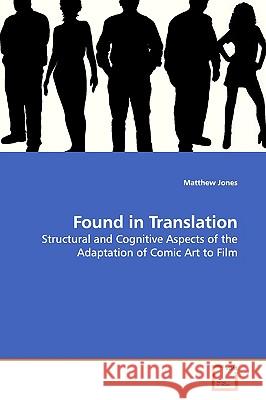Found in Translation » książka
Found in Translation
ISBN-13: 9783639139655 / Angielski / Miękka / 2009 / 216 str.
This book seeks to explore how film adaptations of comic art are constructed and received. Through an analysis comparing different types of comic-to-film adaptations selected from a nearly comprehensive list, a set of adaptive operations was discovered based upon the narrative and stylistic relationships between film adaptations and comic art source materials. Depending upon which operations are used, adaptations may be classified as predominately structural or thematic. At one extreme there are structural adaptations that feature an almost precise correspondence of narrative events between comic source and film adaptation. At the other extreme, thematic adaptations have no relationship of narrative structure to the comic source being adapted, but retain key conflicts and characters. Having established this opposition, a second study was performed to determine the differential effect of reading and viewing a structural versus a thematic adaptation on the experience of telepresence - "the perceptual illusion of nonmediation" (Lombard & Ditton, 1997). Implications for telepresence theory and cultural transmission of experience are discussed.











